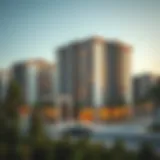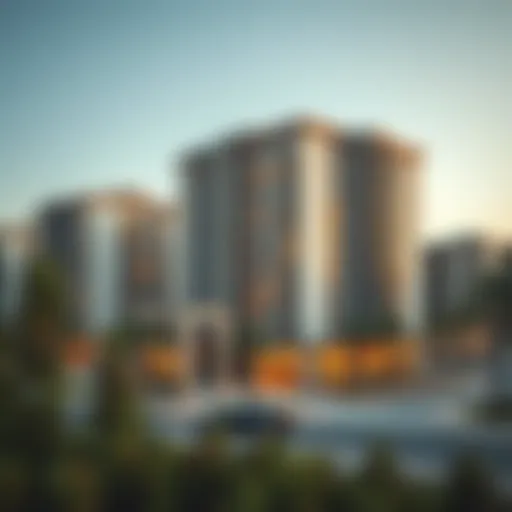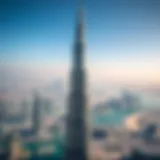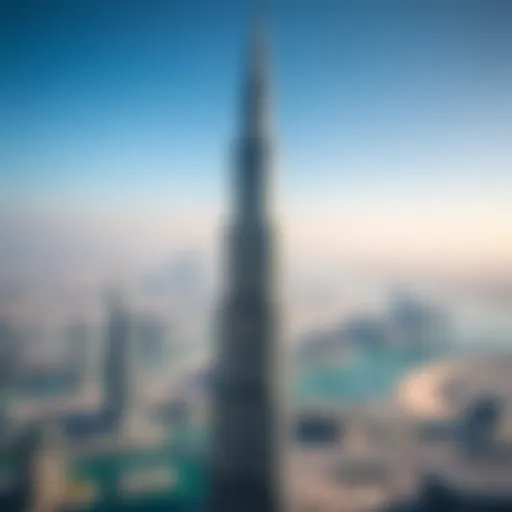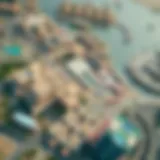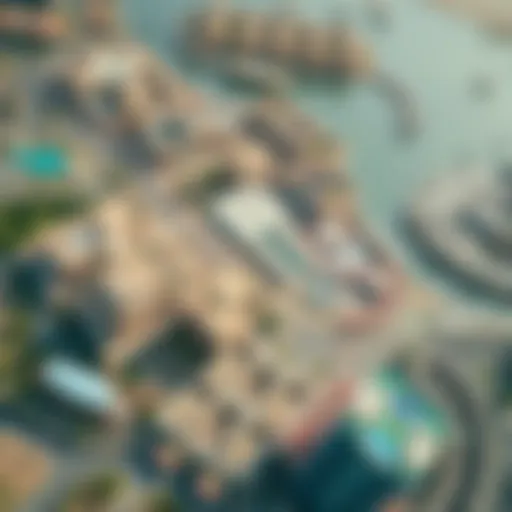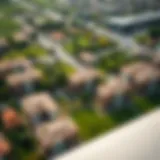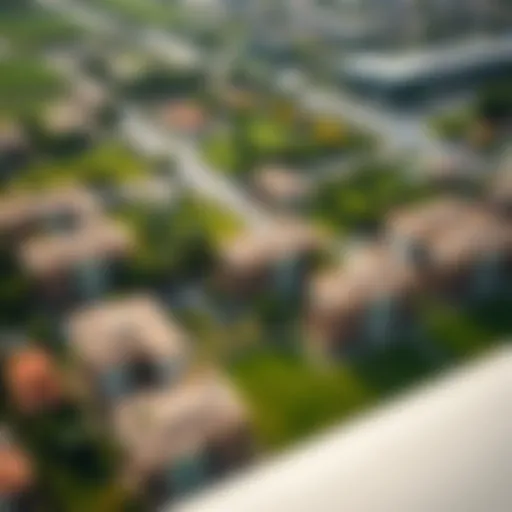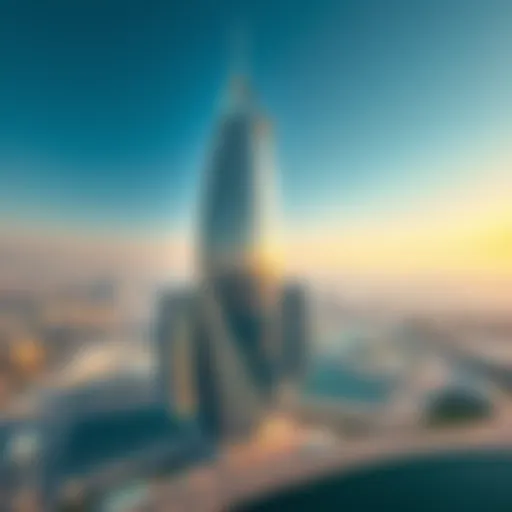Key Developers Transforming Dubai’s Urban Landscape
Intro
Dubai stands as a beacon of architectural innovation and urban development in the modern world. The city has morphed dramatically over the past few decades, with its skyline now characterized by soaring skyscrapers, luxurious villas, and sprawling commercial spaces. At the heart of this transformation lies a cadre of prominent developers, each playing a pivotal role in shaping the urban landscape through their visionary projects and strategic investments.
Understanding this aspect of Dubai's real estate market is crucial for several stakeholders including investors, homebuyers, agents, analysts, and developers. With a booming property sector, navigating the terrain can be both an opportunity and a challenge. This article will delve into the leading names in the development arena, explore current market trends, examine the types of properties available, and offer a glimpse into the dynamic future of Dubai’s housing and commercial realms.
The journey will spotlight key players who have both carved niches with landmark projects and redefined luxury living in this desert metropolis. Alongside this exploration, we’ll also touch on investment opportunities, emerging trends, and considerations for potential buyers. By illuminating these facets of Dubai’s housing market, we aim to provide invaluable insights that serve various interests and foster informed decisions.
Market Trends
Current Real Estate Trends in Dubai
In recent years, the Dubai real estate market has seen shifts influenced by various factors, including global economic conditions, market demand, and regulatory changes. A notable trend is the increasing popularity of off-plan properties, which have attracted many domestic and foreign investors looking to score favorable deals in a budding market.
Furthermore, sustainability has come to the forefront. Developers are now keen on integrating eco-friendly technologies and designs into their projects, making sustainability not just a buzzword but a standard in new developments. Projects like the Sustainable City are testament to this shift, featuring energy-efficient structures and green living spaces that resonate well with the environmentally-conscious buyer.
Future Forecasts for the Dubai Property Market
As we look to the horizon, predictions for Dubai’s property market remain optimistic. The Expo 2020 event, despite delays, is expected to create a temporary surge in demand across various property sectors. Analysts predict that post-expo, the market will stabilize, driven by a balance of domestic and international investments.
Moreover, with various governmental incentives aimed at attracting foreign investment, the stage seems set for a fruitful period ahead. The establishment of long-term visa options for expatriates looking to settle in Dubai is likely to enhance the residential market, while commercial real estate will benefit from an expanding economy.
"Dubai is no longer just a city for tourists; it is blossoming into a place where people want to live and work."
Property Types
Residential Properties: Overview and Insights
The residential sector of Dubai’s real estate market is vast and varied, incorporating everything from high-rise apartments with luxurious amenities to sprawling villas in serene communities. Noteworthy developers like Emaar Properties and Damac have been instrumental in creating iconic residential towers, while also catering to various income brackets, thus widening accessibility.
In terms of client preferences, luxury living remains a hotcake among affluent buyers. However, there’s a growing trend towards more affordable housing options that provide value for money. This trend opens doors for developers to consider designs that meet the demands of middle-income families.
Commercial Properties: Opportunities and Challenges
On the other side, the commercial property market in Dubai presents its own set of opportunities and challenges. With a median age that often gravitates towards entrepreneurial ventures, there’s a robust demand for flexible workspaces. Developers like Meraas have shown keen foresight in designing mixed-use spaces that cater to businesses and recreational needs alike.
Despite the optimisms surrounding commercial real estate, challenges such as fluctuating rental rates and market saturation in certain segments exist. Developers need to stay alert and responsive to market trends, ensuring that their offerings align with current demands.
As competition stiffens, understanding consumer needs, along with strategic forecasting, becomes imperative for securing a foothold in Dubai's dynamic property market.
Overview of Dubai's Real Estate Landscape
The Dubai real estate market serves as a vibrant tapestry, colorful with diverse developments and an ever-evolving skyline. It's not just buildings; it's about crafting a lifestyle, a progress narrative for a city that has grown at lightning speed. This section sets the stage for understanding how factors like the economy, laws, and market trends intertwine to shape the space where countless lives unfold.
Economic Factors Influencing Development
The economic landscape of Dubai plays a pivotal role in real estate development. A booming economy invites investments and influences progress, while fluctuations can bring uncertainty. Areas like tourism and trade heavily contribute to the growth, creating opportunities in commercial and residential property. Moreover, the city's strategic location acts as a bridge between East and West, luring both multinational corporations and individual investors alike. These elements combine to bolster property values and provide a basis for continuous development, appealing to developers focused on meeting ever-increasing demand.
Regulatory Framework
Navigating the Dubai real estate market is like sailing uncharted waters. The regulatory environment is designed to protect investors while promoting growth. The Real Estate Regulatory Agency (RERA) oversees this realm, implementing laws that ensure transparency and fairness in transactions. With measures like investor rights protection, escrow account requirements, and guidelines for property management, this framework fosters a sense of security. Investors can feel confident knowing that there's a legal backing for their investments, which can enhance their overall confidence.
Market Trends and Dynamics
Market trends are a reflection of shifting consumer preferences and economic conditions, balancing demand and supply like a seesaw. Recently, the trend has shifted toward luxury developments as well as affordable housing, capturing interest across various income brackets. Factors such as the growing expat population, international events like Expo 2020, and the city’s vision for sustainable living influence demand patterns. The rise of co-living and flexible workspaces further shapes the landscape, adapting to the needs of a modern populace.
Understanding these dynamics allows investors and stakeholders to strategize effectively, aligning their goals with incoming trends, giving them a competitive edge as Dubai continues to grow.
Leading Developers in Dubai
Understanding the leading developers in Dubai gives insight into the urban transformation of a city that has become synonymous with luxury and ambition. These developers are not just builders; they are catalyst for change, influencing architectural styles, residential trends, and even social dynamics. With a property market that attracts global investors, the importance of these developers cannot be overstated. They are pivotal in shaping Dubai's skyline, but their impact goes beyond mere construction.
The collaboration between developers, local authorities, and investors often leads to innovative solutions that elevate the living standards for residents and create vibrant communities. This leads to benefits such as increased investment in local infrastructure, enhanced urban mobility, and improved public amenities. The developers discussed here—Emaar Properties, Damac Properties, Dubai Properties, Nakheel, and Meraas—each has a unique ethos and approach that contributes to the overall market landscape and urban environment.
Emaar Properties
Emaar Properties stands tall among Dubai's developers, recognized for its profound contributions to the city's luxurious and well-planned developments. Their commitment to high standards is evident in their flagship projects that cater to both local and international markets.
Signature Projects
Emaar's signature projects like the Burj Khalifa and the Dubai Mall are not just landmarks; they represent the pinnacle of architectural excellence. With luxurious amenities and exquisite designs, these developments are a popular choice for investors looking at high-end real estate in Dubai.
Key characteristic: Emaar specializes in integrating lifestyle with luxury
Unique feature: The Burj Khalifa, as the world’s tallest building, serves as an aspiration, showcasing what can be achieved in design and engineering.
Advantages include attracting tourists and providing a platform for diverse retail opportunities. However, the downside could be the high entry costs associated with investment in such premier projects.
Market Position
Emaar maintains a robust market position, often regarded as a leader who sets trends rather than follows them. This standing results from substantial investments and a keen insight into market demands.
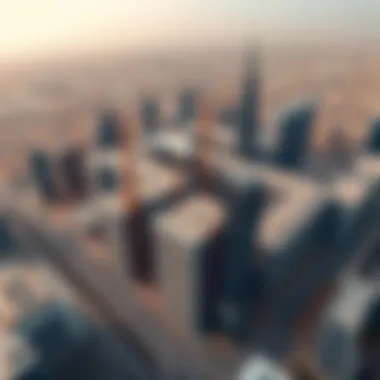
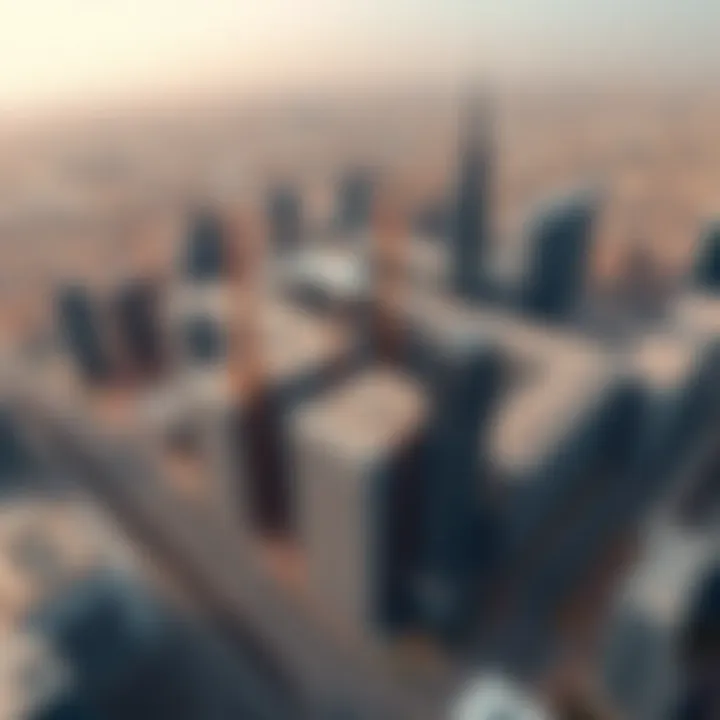
Key characteristic: Strong financial backing allows for significant projects that push the envelope in terms of technology and sustainability.
Unique feature: The company's valuation and reputation draw a multitude of investors, further solidifying its dominance in the market.
The advantages include better access to capital and high visibility in local and international markets. Yet, the competitive nature of the sector means Emaar must continually innovate to stay ahead.
Future Developments
Looking towards the future, Emaar is poised to launch projects that will continue to redefine urban living. Their focus on sustainability and integrated communities indicates a willingness to address modern living concerns.
Key characteristic: A blend of high technology with environmentally conscious design is a promising direction for future projects.
Unique feature: Initiatives like Dubai Hills Estate combine residential and commercial spaces harmoniously.
While the advantages are clear in terms of market attraction and brand loyalty, any potential economic downturn could pose significant risks to these ambitious projections.
Damac Properties
Damac Properties is another major player in Dubai’s real estate scene, known for its opulent and modern designs.
Design Philosophy
Damac's design philosophy revolves around luxury and excess, often pushing the boundaries of conventional architecture.
Key characteristic: They focus on creating high-end residences that frequently attract affluent buyers and investors.
Unique feature: Collaborations with international brands like Versace and Fendi for interior designs are notable.
This philosophy places them in a unique position to cater to a niche yet growing market segment interested in luxury living.
Key Offerings
From lavish villas in premium locales to stylish apartments, Damac offers a diverse portfolio. Their properties often feature world-class amenities that cater to a luxurious lifestyle.
Key characteristic: High-quality finishes and exclusive services set their properties apart.
Unique feature: The ongoing expansion into hospitality and leisure, creating integrated communities.
These key offerings ensure an elevated living experience, but potential investors must consider the high cost associated with luxury properties.
Strategic Initiatives
Damac's strategic initiatives emphasize rapid growth and market share expansion. A meticulous focus on development around popular districts keeps them aligned with market trends.
Key characteristic: Their aggressive marketing campaigns are designed to reach a wider audience.
Unique feature: Developing properties in emerging neighborhoods guarantees early investments at lower costs.
This forward-thinking approach bears the potential for significant profit, yet the volatility of market demands poses challenges for sustaining growth.
Dubai Properties
Dubai Properties plays a vital role in creating community-focused developments that resonate with families and individuals alike.
Community Focused Developments
Their emphasis on creating cohesive communities is reflected in projects like Jumeirah Beach Residence. This approach makes living in Dubai more accessible and desirable.
Key characteristic: Integrated amenities like parks, retail, and schools create a holistic living experience.
Unique feature: Developments often include affordable housing options within luxury areas.
This community-centric approach enhances livability, but may limit the company's reach into ultra-luxury spaces.
Vision and Goals
Dubai Properties maintains a vision that aligns with governmental objectives for sustainable urban living. Their goals focus on maximizing space and enhancing livability, reflective of modern lifestyles.
Key characteristic: A balanced view towards both economic viability and resident satisfaction.
Unique feature: Efforts in developing cultural hubs cater to diverse populations.
This vision can yield long-term benefits, yet the challenge remains to continuously evolve alongside rapid urban growth.
Industry Collaborations
Key collaborations with various stakeholders, including local artisans and environmentalists, enhance their project outcomes.
Key characteristic: Partnering with local authorities ensures compliance and relevancy in community needs.
Unique feature: Support for local businesses creates a more robust economic ecosystem.
While collaborations greatly increase project strength, they also add layers of complexity to the decision-making processes involved.
Nakheel
Nakheel is a partner in the tourism boom, known for its creative and distinct developments that have left a mark on the city's landscape.
Iconic Projects
Nakheel’s most iconic projects, including the Palm Jumeirah, have become global symbols of Dubai's advancement and creativity.
Key characteristic: Focuses on ambitious, large-scale developments that attract international tourism.
Unique feature: The creation of man-made islands is extraordinary, showcasing engineering grandeur.
The tourism influx generates substantial revenue, while potential environmental issues could pose risks to sustainability.
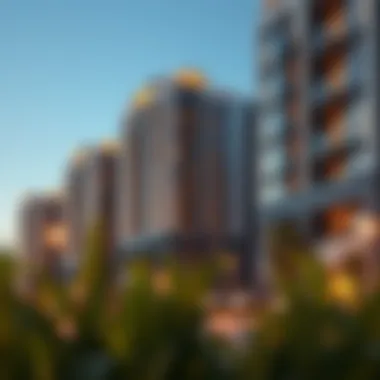
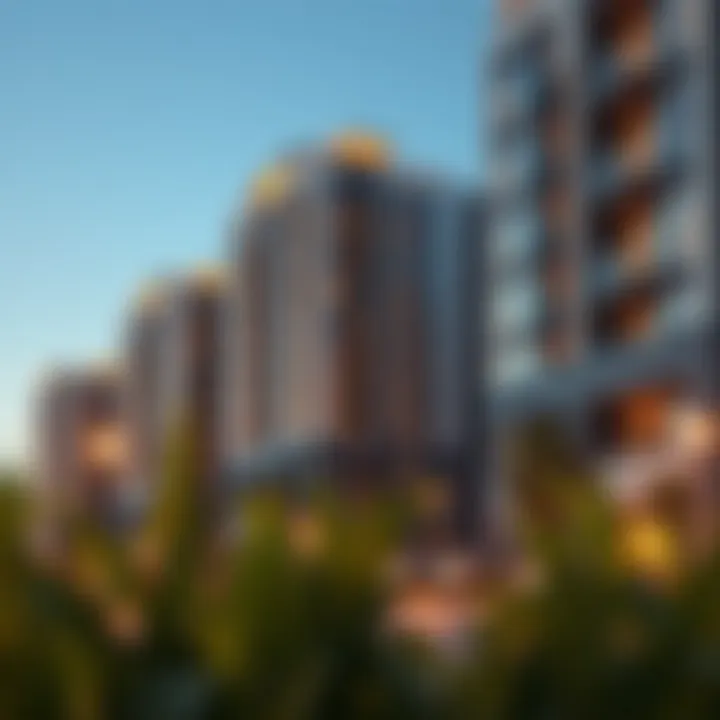
Environmental Considerations
Sustainability is gradually becoming a priority for Nakheel, evidenced by its focus on eco-friendly designs in new projects.
Key characteristic: Employing sustainable materials and planning for eco-friendly community features.
Unique feature: Projects like The Sustainable City reflect efforts toward greener developments.
While environmentally-conscious designs boost Nakheel’s reputation, the challenge is to achieve balance between luxury and sustainability in an often challenging market.
Global Influence
With projects that draw international attention, Nakheel significantly influences Dubai's image on the world stage.
Key characteristic: Their developments attract foreign visitors and investors alike, contributing to economic growth.
Unique feature: Collaborations with international brands fortify the company’s global reach.
This influence opens the door for numerous investment opportunities, yet maintaining a global competitive edge amidst rising local developers is crucial.
Meraas
Meraas has reshaped Dubai's lifestyle space with innovative approaches towards design and community structure.
Innovation in Design
Pioneering concepts, Meraas stands out for their unique architecture and master-planned communities.
Key characteristic: A distinctive approach adaptable to changing consumer preferences.
Unique feature: Projects like Bluewaters Island redefine leisure time, blending residential and tourism elements.
This innovative design philosophy allows them to target diverse market segments but may lead to risk if trends fail to resonate with buyers.
Signature Estates
Meraas's signature estates like City Walk merge residential living with retail and entertainment, creating integrated urban environments.
Key characteristic: These estates offer convenience and lifestyle opportunities in one package.
Unique feature: A focus on creating walkable communities enhances urban navigation.
This approach attracts modern families but can present logistical challenges in achieving dense urban design.
Planned Growth
Meraas has an eye on future growth through strategic planning and phased development.
Key characteristic: Addressing market needs while ensuring flexible designs that can adapt over time.
Unique feature: The strategic location of projects maximizes accessibility and market relevance.
Their planned growth ensures relevance, but the pace must be managed to avoid saturation within a competitive market.
Impact of Developers on Urban Development
The role developers play in shaping urban landscapes is pivotal, especially in a city like Dubai where innovation and growth are part of the fabric of its identity. They not only construct buildings; they create neighborhoods, redefine skylines, and influence the very lifestyle of residents. The interplay of architectural ambition and market demands serves as the backdrop for ongoing development, making it essential for investors, homebuyers, and stakeholders to understand the driving forces behind urban development.
Architectural Influence
Dubai's skyline is a testament to the vision of its developers. From the iconic Burj Khalifa to the vast Palm Jumeirah, each structure embodies unique architectural styles that contribute to the city's identity. Developers like Emaar Properties have established a reputation for marrying cutting-edge design with functionality. This fusion not only elevates the aesthetic appeal of the city but also enhances property values. Moreover, the influence of these architectural feats spills over into public spaces — parks, walkways, and communal areas are all designed with intention, creating a harmonious balance that enhances urban life.
Key Aspects of Architectural Influence:
- Innovative Design: New builds often feature smart technologies and sustainable materials, attracting modern-day buyers.
- Cultural Significance: Each project reflects cultural narratives unique to the UAE, enriching the city’s historical tapestry.
- Sustainability Efforts: Increasingly, projects prioritize eco-friendly designs that promote a greener urban environment.
Investment Attraction
Dubai's developers significantly affect its attractiveness as an investment hub. With the government's support for foreign investments and favorable economic conditions, investors are keen to capitalize on the booming real estate market. The reputation of prominent developers as reliable stakeholders adds a layer of security for potential buyers. High-quality finishes, luxury amenities, and strategic locations create compelling propositions that draw both local and international investors.
Factors Driving Investment:
- Strong Rental Yields: The potential for lucrative returns makes Dubai appealing.
- Diverse Property Options: Developers are catering to varied tastes, from lavish villas to chic apartments.
- Incentives for Buyers: Many projects offer flexible payment plans and financing options to ease the investment process.
"The collaboration of various developers has breathed life into Dubai’s urban development, making it one of the most sought-after locations for investment in the region."
Cultural and Community Contributions
Beyond the tangible structures, developers in Dubai contribute significantly to cultural identity and community building. Many residential projects foster a sense of belonging and community spirit among residents. Amenities like community centers, art installations, and cultural events help in creating social fabric. This cultural emphasis is crucial, as it transforms mere buildings into vibrant communities where families can thrive.
Impactful Contributions include:
- Community Spaces: Collaboration on public art projects and parks enhances social interaction.
- Cultural Events: Sponsorship and organization of local festivals and markets keep traditions alive and engage residents.
- Historical Integration: Developers often blend modern architecture with historical aspects, promoting cultural heritage.
Challenges Facing Developers
In the ever-evolving landscape of Dubai's real estate market, developers face a set of challenges that are intertwined with the city’s growth trajectory. Understanding these obstacles is crucial for both investors and other stakeholders as it sheds light on the complexities that might affect investment returns and the overall healthy development of the market. The challenges now impact everything from project timelines to financial viability, making it essential for developers to navigate these issues adeptly.
Market Saturation

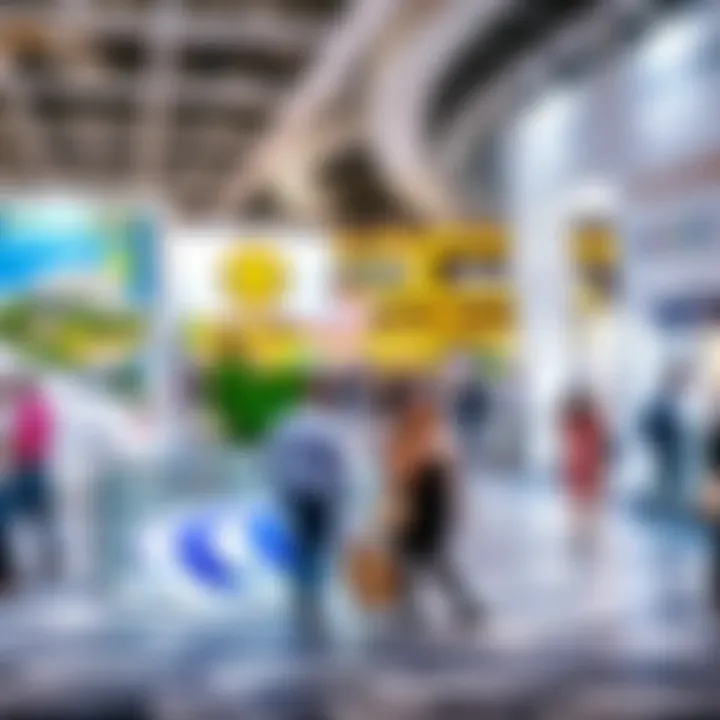
A key concern for developers in Dubai is market saturation. With a surge in the number of real estate projects, potential buyers now have more options than ever. This often leads to fierce competition among developers. Though this can result in more attractive offerings, it can also put downward pressure on prices, affecting developers' profit margins. The question arises: how do developers differentiate their projects in such a crowded marketplace?
To combat saturation, developers may need to innovate and focus on unique selling propositions. This might include integrating technology to enhance resident experience, prioritizing prime locations, or focusing on amenities that cater to modern lifestyles. Developers are also increasingly exploring niche segments—such as affordable luxury or eco-friendly living spaces—to appeal to discerning buyers.
Sustainability Concerns
In today’s World, sustainability is no longer just an industry buzzword; it is a crucial factor in real estate development. Consumers and governments alike are demanding more environmentally friendly options. Developers must grapple with the implications of sustainability not only on project design but also on regulatory compliance and long-term operational costs.
The challenge lies in balancing sustainability with profitability. Incorporating green technology—be it solar panels, energy-efficient heating, or sustainable materials—may incur higher initial costs. However, in the long run, these investments can lead to reduced operating expenses and increased property values. For instance, developments that earn green certifications are often perceived as more desirable, appealing to environmentally conscious buyers and investors. As a result, developers have to navigate the intricate dance of enhancing sustainability while ensuring that the bottom line stays healthy.
Regulatory Changes
Dubai's regulatory environment is as dynamic as its skyline. Developers often face shifting regulations that can impact everything from zoning laws to building codes. This can lead to uncertainty, complicating the planning and execution of projects. A developer’s ability to adapt to these changes is essential for minimizing delays and financial strife.
For example, changes in foreign ownership laws or labor regulations can necessitate a recalibration of a developer’s strategy. Builders may also need to remain vigilant regarding the approvals process, which can be both tedious and time-consuming. Being proactive and establishing strong relations with regulatory bodies can often mitigate these difficulties, ensuring smoother project execution.
"A developer’s foresight in anticipating regulatory shifts can mean the difference between success and setback."
In summary, while the prospects for real estate in Dubai remain promising, developers must contend with a myriad of challenges that test their resolve and adaptability. A strategic approach to market saturation, sustainability, and regulatory changes will be essential for not just surviving but thriving in this competitive environment.
Future of Real Estate Development in Dubai
The real estate landscape in Dubai is swiftly undergoing a transformation fueled by innovation and shifting societal norms. The future of development in this desert metropolis is pivotal not only for meeting the needs of the increasing population but also for ensuring the city remains a global hub for business and tourism. Developers have to consider myriad factors ranging from sustainability to incorporating cutting-edge technology. The dynamic interplay of these factors helps shape the direction in which the city is heading.
Emerging Technologies
Emerging technologies are no longer a faraway dream; they are shaping the present and future of real estate development in Dubai. Developers are leveraging advancements in artificial intelligence, virtual reality, and big data analytics to enhance the buyer experience and streamline operations. With AI, for instance, developers can predict market trends more accurately, helping them make informed decisions on new projects.
Virtual reality offers potential homebuyers immersive experiences that allow them to
Investment Opportunities in Dubai
Dubai has carved a niche for itself as a hotspot for investors, not just regionally but also globally. With its dazzling skyline and a booming economy, the Emirate offers various opportunities that are hard to ignore. Investors looking to diversify their portfolios or find promising returns should take a deeper look into Dubai’s dynamic real estate market. The appeal isn’t merely based on the stunning buildings or extravagant lifestyle but also on solid economic fundamentals and strategic location.
The real estate scene in Dubai has evolved significantly, becoming a melting pot of cultures and a hub for business and tourism. This transformation is largely driven by the robust infrastructure put in place by prominent developers. With this background, understanding the opportunities for investment becomes crucial, especially for those eyeing long-term gains and stability.
Key Areas for Investment
Dubai boasts several key areas that are ripe for investment. Each of these locales offers unique advantages:
- Downtown Dubai: Home to the iconic Burj Khalifa, this area is a beacon for luxury living and high-end retail. Properties here appreciate rapidly, attracting affluent buyers and tenants.
- Dubai Marina: Known for its vibrant lifestyle, this waterfront community features numerous high-rise apartments and resorts, ideal for both short-term rentals and long-term investments.
- Dubai Creek Harbor: This burgeoning area promises a blend of lush greenery and modern architecture, appealing to families and expatriates looking for a community vibe.
- Jumeirah Village Circle (JVC): A more affordable option that has seen significant demand, JVC is becoming increasingly popular among first-time buyers and investors.
Each location not only provides a unique investment thesis but also showcases how the vision of the developers aligns with the needs of residents and businesses.
Understanding ROI
Calculating the return on investment (ROI) in Dubai’s real estate market can be quite straightforward, provided investors focus on the right parameters. To truly grasp the potential returns, they must look beyond surface-level metrics.
Key Factors to Consider for a Strong ROI:
- Rental Yields: Certain areas in Dubai can offer rental yields averaging between 6% to 10%, considerably higher than many global cities. This makes them particularly appealing for buy-to-let investors.
- Capital Appreciation: Trends indicate that properties in strategic locations tend to appreciate in value over time. A case in point would be investments made a few years ago in Downtown Dubai, where values have shown remarkable growth.
- Market Timing: Understanding market cycles and investing during periods of growth can significantly enhance ROI. Investors are wise to stay attuned to market indicators and regional developments that might affect prices.
In a nutshell, a thorough analysis of these components can help investors make better decisions, ensuring profits are maximized in an ever-evolving market.
Financing Options
Navigating the financial landscape in Dubai is another critical aspect for potential investors. Various financing methods cater to diverse investor needs, whether they seek to leverage their purchasing power or enter the market outright.
Key Financing Options Include:
- Mortgages: Many local banks offer attractive mortgage rates for both expatriates and UAE citizens, enabling buyers to finance their property comfortably. Terms typically range from 15 to 25 years.
- Off-Plan Investments: This option allows for payment schedules linked to construction milestones, providing flexibility in financial planning. Investors can often secure properties in prime locations at lower price points before completion.
- Cash Purchases: While less common, some investors opt to pay in full, taking advantage of discounts that sellers may offer for cash transactions.
Obtaining the right financing can mean the difference between a successful investment and a troublesome one. With the right knowledge, investors can make informed choices that align with their financial strategies.
End and Insights
In this increasingly intricate landscape of Dubai's real estate, it is crucial to encapsulate the developments and prospects articulated throughout this article. The role of prominent developers has not merely been about the mere construction of skyscrapers and communities; rather, it extends into the very fabric of Dubai's burgeoning economy. Each developer contributes uniquely, wielding architecture, innovation, and community engagement as tools to elevate not just the skyline, but the living experience within the city.
Summarizing Developer Contributions
The developers discussed—Emaar Properties, Damac Properties, Dubai Properties, Nakheel, and Meraas—represent a collective force shaping the future. Their projects—ranging from residential towers to leisure facilities—offer more than just housing; they present lifestyles, experiences, and opportunities. Emaar, for instance, has laid down legacy projects like the Burj Khalifa, which is not only a feat of engineering but a symbol of Dubai's aspiration.
Damac’s focus on luxury and style speaks volumes about their targeted markets while developing Dubai’s identity as a cosmopolitan city. Additionally, Nakheel’s initiatives, especially the Palm Jumeirah, demonstrate a boldness in planning and execution, quite literally extending Dubai’s shores. Each developer adds a layer of complexity and intrigue regarding investment considerations, community development, and the overall visual narrative of this dynamic city.
Future Outlook
Looking ahead, the Dubai real estate market is on the verge of transformative changes influenced by emerging technologies and global trends. The integration of smart home features and renewable energy solutions increasingly becomes a standard rather than an exception. Developers are shifting gears, adopting green building practices to not only meet regulatory demands but also cater to a growing base of environmentally conscious consumers. Investing in sustainability isn’t merely a trend; it’s becoming imperative in staying relevant within the competitive landscape.
As the population and demand for properties increase, developers will likely explore inventive strategies and technological advancements, allowing them to remain agile. Understanding the economic landscape and regulatory shifts will enable them to navigate through challenges effectively while unlocking new investment avenues.
Building lasting communities—a focal point in the discussions—remains paramount in improving the quality of life in Dubai. The future undoubtedly holds a blend of tradition and innovation; this confluence promises a rich tapestry of opportunity not only for developers but also for investors and residents alike. Thus, continuing to observe the landscape as it evolves will provide invaluable insights into the future paths available for investment and growth.
"Dubai’s skyline isn’t just about height; it’s a symbol of aspiration, resilience, and unyielding ambition."
For more detailed insights and updates, check resources like Dubai Land Department or explore discussions on the evolving dynamics of Dubai real estate on Reddit.
Through broadening our understanding of these factors, investors, homebuyers, and stakeholders can make informed decisions that reflect not just current trends but also anticipate future developments in this remarkable city.




